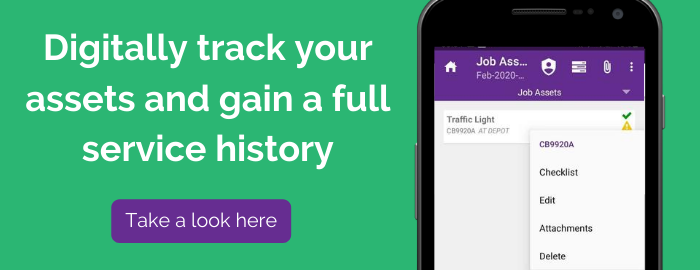
Keeping track of where things are is essential when you’re working with a mobile workforce.
This means knowing not only where each worker is, but also the location and status of the components of a company - from tools and equipment to laptops and packages.
It’s a task that is being transformed by digital technology, making asset management something that’s now accessible to companies of all scales.
Here’s a look at what it is and why it’s important:
What is asset management?
Asset management covers any business system that’s designed to track the location and status of business items. Commonly tracked items include:
- Vehicles
- Machinery
- Files and documents
- Packages
- Equipment
- IT assets: Laptops/monitors/phones
Asset management will record information on the location and status of these items, providing managers with an overview of assets across their operations. Traditionally, asset management has relied on a manual process with information having to be updated via paperwork or a spreadsheet.
Digital technology allows asset management to be automated with mobile devices and GPS enabled tools to streamline the process. Barcodes are attached to items, allowing them to be scanned with a mobile device to log location and update status.
Radio-frequency identification (RFID) tags can also be used to allow for real-time monitoring of items. This will typically be used to track more expensive items such as vehicles or machinery.
What are the benefits of asset management?
There’s a range of benefits delivered by the ability to track your assets. These include:
- Efficiency
- Maintenance
- Compliance
- Time-saving
Efficiency
Effective management of a mobile operation is based on access to information. A manager needs to know what they have to ‘play with’ - the location and status of workers and the items involved in operations.
Having access to accurate data allows informed decisions to be made. It prevents the administrative mess and costs that can result when remote assets are scattered and there’s no simple way to find them.
Maintenance
Asset management allows maintenance standards to be significantly approved. Systems can keep track of when any checks, services or replacements are required. Any issues, such as a required repair, can be easily flagged and tackled.
It’s a preventative approach that can improve safety and reduce costs by ensuring that items are properly maintained. Without effective asset management, managers are only alerted to issues when a problem has occurred.
Compliance
The ability to track assets is a valuable tool when it comes to working within all industry compliance standards and regulations. Equipment maintenance, calibration and testing can be scheduled with each check logged by the system.
It provides easy access to all the data that’s required to show that checks and safety processes have been properly carried out. It also makes sure that accurate records of business assets are supplied to external authorities, such as HMRC.
Time-saving
Using technology to manage assets allows the process to be automated. A scan of a mobile device and the touch of a button is all that’s needed to record the location and status of an item.
The data is instantly accessible to managers with no need to manually transfer or key-in data. It reduces the administrative burden of asset management throughout a business, saving time and removing the need for tedious and error-prone data entry.
Want to know more about an integrated solution?
MyMobileWorkers is a digital workforce management system that includes asset management and tracking capabilities. You can find out more here:
Image by John Brown from Pixabay


